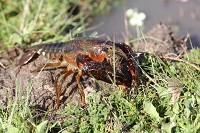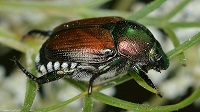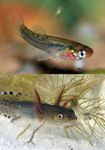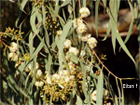
Welcome
Welcome to the official website of the Doñana Biological Station (EBD-CSIC)...

The Doñana Biological Station: EBD-CSIC
The Doñana Biological Station is a public Research Institute belonging to the Spanish Council for Scientific Research CSIC in the area of Natural Resources...

Mission
Our fundamental mission is to carry out multidisciplinary research of the highest standard directed to understanding the way in which biodiversity is generated, maintained and deteriorates, as well as the consequences of its loss...

Our methods
We apply many techniques within a multidisciplinary framework, from molecular genetics to remote sensing, and from modelling to physiological and isotopic analyses...

Monitoring the environment
Monitoring biodiversity at the Doñana Natural Space cover a wide range of communities, including both terrestrial and aquatic organisms...

Aims
Our aims include the study of the ecological and evolutionary processes by combining field work, mathematical and statistical models and physiological and genetic analysis...
 Outstanding
Outstanding
-
 American crayfish occupy 95% of the Italian crayfish’s niche in the Iberian Peninsula
American crayfish occupy 95% of the Italian crayfish’s niche in the Iberian Peninsula -
 Researchers identify the species with the highest risk of becoming invasive in Spain
Researchers identify the species with the highest risk of becoming invasive in Spain -
 Interactions between mosquitofish and native newts
Interactions between mosquitofish and native newts -
 Guidelines for classifying Alien Taxa
Guidelines for classifying Alien Taxa -
 Effects of Eucalyptus plantations in stream ecosystems
Effects of Eucalyptus plantations in stream ecosystems
 News
News
Content with tag exotic species .
 American crayfish occupy 95% of the Italian crayfish’s niche in the Iberian Peninsula
American crayfish occupy 95% of the Italian crayfish’s niche in the Iberian Peninsula
The study was based on historical sources to describe the evolution of the species distributions and the factors that may have influenced the process.
 Researchers identify the species with the highest risk of becoming invasive in Spain
Researchers identify the species with the highest risk of becoming invasive in Spain
Those include, for example, the Japanese beetle, the roundworm Radopholus similis, or the marine plant Halophila stipulacea. More than 80% of the species identified are not included in the...





